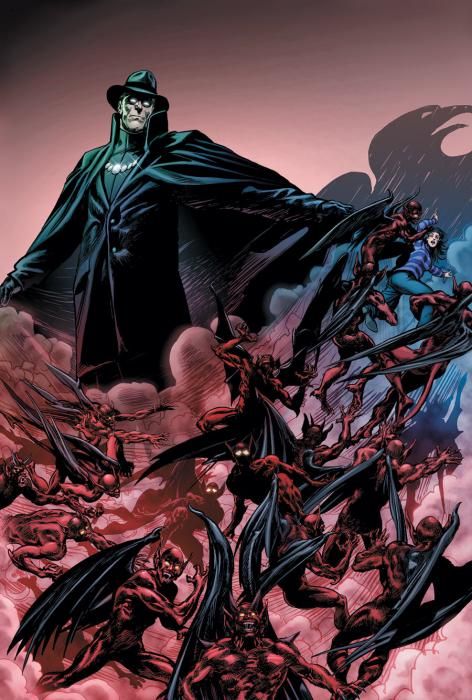In "Phantom Stranger" #1, the Phantom Stranger, formerly known as Judas Iscariot, is forced into penance from higher powers to wander the world seeking redemption by setting others upon their predestined paths. In return for every person he course corrects, he is lessened one coin of his burden of thirty silver pieces. Unfortunately for two of those characters, their destiny is on the other side of a whole world of pain.
Enabling a continuing streak of betrayal and deception, Dan DiDio makes the Phantom Stranger less creepy and more of a creep. Not only does this character stand by and witness the death of a young boy, but he permitted that death in order to meet Rachel, a teenager with the ability to absorb the emotions of others and channel that into a dark, bird-shaped energy projection. Yes, dark like a raven. With the mystery that once shrouded him dissolved, Phantom Stranger simply becomes a supporting character in his own book, virtually stepping aside to empower the transformation of other characters.
The philosophical argument could be made that the Stranger commits (or at the very least fails to stop) acts of evil for the greater good. After all, by betraying Jesus, Iscariot fulfilled prophecies and enabled Jesus to become the foundation of Christianity as their Savior. In this series he's betrayed Jim Corrigan to help create the Spectre and now betrays Rachel who will undoubtedly become even more familiar to longtime DC readers. In doing so, however, the Stranger appears to be reduced to simply being a puppet without free will or interesting personality.
As my colleague, Greg McElhatton, eloquently stated in his review of "Phantom Stranger" #0, this title is poised to become "a less-interesting revival of 'House of Mystery' or 'House of Secrets,' only here the host character interacts with the guest-star-of-the-month." That sums up this issue quite succinctly as well, but in this case; the guest appearances of two characters are tightly woven together and overpower anything the Stranger could contribute.
That assessment is aided by some strong art from Brent Anderson and Philip Tan. Credited with "embellishing," Tan adds texture and grit to Anderson's strong layouts. Anderson and Tan play with the entirety of the page, having characters break panels and spring to life. The additional lines brought in by Tan's work give the story a darker feel and make the world immediately more sad. There are times, however, when the artwork gets so busy and chaotic that the story being told through those images just disappears into murkiness. Thankfully, Travis Lanham's captions and word balloons help navigate those trouble spots.
This Phantom Stranger is not a character I want to read about. In place of the mystery that once surrounded this character, there's history. Unfortunately, that history is simply not good and his telegraphed "purpose" makes him little more than an uninspired re-imagining of Deadman. What does interest me is the range of characters the Stranger is set to meet as he has already met Spectre and the character introduced in "Phantom Stranger" #1.

